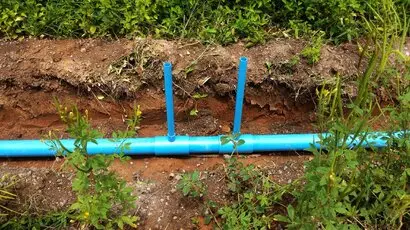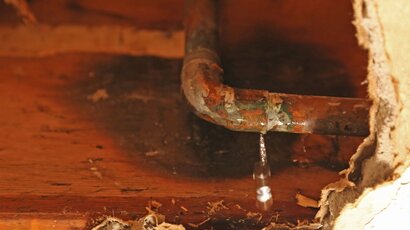If you’re looking into pipe relining to fix your plumbing, a common concern is whether your home insurance will cover it. It’s a valid query! Knowing the ins and outs of your policy can save you from unexpected expenses.
This guide takes you through typical home insurance policies, covering what’s included, what isn’t, and how to get claims approved for pipe relining. Armed with this information, you’ll approach any plumbing upgrades with confidence, knowing you might recoup your costs. Let’s dive in, so you’re well-prepared to make smart decisions about your home’s crucial investment—the pipes!
What Perils Trigger Pipe Relining Coverage?
To figure out if your policy covers pipe relining, check what kind of damage or peril necessitated the relining. Common culprits include water leaks, pipes bursting due to freezing, tree roots cracking the lines, general ageing, and sudden mechanical failures.
![]()
For instance, if a rusty pipe leaks and floods your basement, prompting a full relining, water damage would likely be covered. Similarly, if tree roots fractured a sewer line severely, leading to relining as the only fix, then coverage for root-related damage would apply.
The key is to tie the relining need back to a covered damage reason, whether water, freezing, roots, wear and tear, or other perils in your unique policy.
Common Exclusions to Be Aware Of
While many perils leading to relining are covered, there are also noteworthy exclusions to be aware of. Pre-existing damage or deterioration of a plumbing system often falls into a grey area that providers may not cover.
Gradual wear and tear over decades may also be denied since it happened slowly rather than suddenly. Faulty materials, improper installation, or shoddy workmanship are commonly excluded, too. Earth movement won’t be covered like soil settling that warps pipes. Finally, flood damage is excluded from most standard policies.
Any pre-existing issues or indications of long-term, gradual damage will jeopardise your claim eligibility. Focus your claim on documenting sudden, accidental damage aligned with covered perils. Being aware of standard exclusions helps set proper expectations for coverage.
Tips for Getting Claims Approved
When you’re filing an insurance claim for pipe relining, following these essential steps can improve your odds of getting it approved.
Document Damage and Repairs Needed
Make sure to comprehensively document pipe damage using photos, videos, and professional assessments. This proof shows why relining is necessary. Insurance companies appreciate solid evidence, as it helps validate your claim. Don’t forget to point out if draining cleaning wasn’t enough to solve the issue.
![]()
Get Multiple Estimates
Collect estimates from at least 2-3 relining companies. This shows due diligence and justifies the repair cost for your insurance company. Providing multiple estimates for pipe repair helps establish reasonable expenses for the work.
Highlight Sudden or Accidental Damage
Emphasise that pipe damage occurred suddenly, such as from a covered peril like water leakage, rather than gradual deterioration. Insurance providers are more likely to approve claims when pipe damage is accidental rather than deferred maintenance. Clearly explain why relining is needed now to prevent further complications.
Check Policy Limits for Plumbing Repairs
Understand the coverage limits for plumbing repairs within your policy. Knowing the specifics helps you manage expectations on the amount your insurance provider might reimburse. This can also clarify if relining falls under covered services or if limits apply to more traditional forms of pipe repair.
Follow Claim Filing Procedures
Submit all paperwork, photos, and other documentation to your insurance company according to their requirements. Respond promptly to inquiries and ensure every detail is accurate and complete. Following insurance company protocols helps avoid delays and increases your chances of a successful claim.
When to Speak to an Insurance Agent
If you encounter unclear or confusing language in your policy regarding relining coverage, it’s wise to consult directly with your insurance agent. They can explain specific clauses, terms, and exclusions and how they may affect your situation.
An agent can advise if filing a claim seems advisable based on your circumstances or if coverage limitations would mean paying large out-of-pocket expenses anyway.
![]()
In the case of a denied claim, an insurance agent may be able to negotiate or appeal the decision for you if evidence warrants a reversal. Whenever policy interpretation is needed or claims hit a snag, turn to your agent as an advocate.
Agents have experience navigating claims and can cut through red tape. Speaking to an agent early in the process can help set realistic expectations and avoid disappointment later.
Get the Coverage You Need for Pipe Relining Repairs
Grasping how your insurance policy views pipe relining is crucial before any plumbing renovation. While policies differ, many cover issues caused by typical problems like water damage or invading tree roots.
Being aware of exclusions and proactively filing detailed claims gives you the best shot for approval. Our team at WP Plumbing has experience successfully advising customers through this process.
If you are uncertain about your insurance coverage for an upcoming or needed pipe relining project, contact the experts at WP Plumbing. Our knowledgeable staff can assess your situation and work with you to explain policy details.
We can also provide the necessary documentation to submit insurance claims and maximise your chance of reimbursement. Don’t leave your insurance benefits on the table—partner with WP Plumbing to take full advantage of covered repairs. Call us today to discuss your relining plans and insurance questions.






